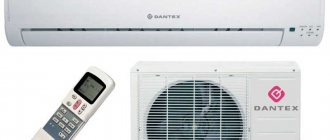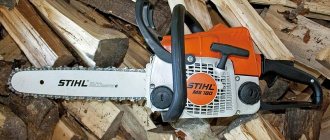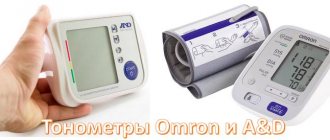| Place | Name | Characteristics in the rating |
| TOP 10 best OMRON nebulizers |
| 1 | Omron CompAir NE-C28 Plus | The most powerful nebulizer |
| 2 | Omron Comp Air NE-C24 Kids | Best for baby |
| 3 | Omron Micro Air NE-U22 | High efficiency |
| 4 | Omron CompAir NE-C25 | The best nasal shower device |
| 5 | Omron Comp Air NE-C30 Elite | The most compact compressor inhaler |
| 6 | Omron Comp Air NE-C20 basic | Best price |
| 7 | Omron DuoBaby NE-C301 | The best device with masks for children and adults |
| 8 | Omron Comp Air NE-C300 | Possibility to select a mode |
| 9 | Omron CompAir NE-C21 basic | Convenient design. Low noise level |
| 10 | Omron Comp Air NE-C24 | Equipped with special technology |
How to care for your nebulizer?
Once you know how to use a nebulizer, you need to figure out how to care for it. After use, it must be washed, and disinfection must be carried out, but not very often. Disinfection of household appliances must be carried out once every two months. This rule is relevant if the device is used by only one person. If, after using the inhaler by one patient, the baton is passed on to the second, then the device must be washed and sterilized.
Disinfection of inhalers is necessary to ensure that germs and bacteria do not spread in the device elements. Bacteria may cause complications and serious consequences the next time you use the inhaler. The rules of care are determined by the following actions:
- After using the nebulizer, you need to clean the mask, filters and cup in boiled soapy water.
- After washing the elements, you will need to dry them. After this, you can begin to assemble the device.
- After three procedures, the inhaler must be disinfected. Processing of device elements must be carried out using specialized tools.
Not everyone knows how to use a nebulizer inhaler correctly, and in particular how to wash it. After any use, the mask and glass must be treated in boiled water and dried after rinsing. After use, harmful microbes can settle on nebulizers, which, with subsequent use, will enter the lungs and cause infectious diseases, for example, pneumonia. After soaking in specialized products, the parts must be rinsed in boiled water.
There are two ways to disinfect a nebulizer at home:
- Chemical
. Such procedures should be given preference if device parts are susceptible to high temperatures. If the manufacturer does not advise carrying out cleaning operations at high temperatures, then chemical treatment is done. - Disinfection using an autoclave
. The washing solution reaches high temperatures of up to 139 degrees when autoclaving. It is important to consider what the components of the inhalers are made of. It is necessary to read the instructions - the annotation indicates how to disinfect parts of the device, and how to use the nebulizer yourself.
How to breathe correctly with a nebulizer?
For nebulizer inhalations to be as effective as possible, they must be done correctly:
Advertising:
- 1.5-2 hours before and after the procedure you should not exercise or eat;
- a few hours before and after you need to stop smoking;
- during inhalation, nothing should restrict breathing - clothing should be loose;
- if it is necessary to treat nasal diseases or runny nose, the procedure is performed using a special attachment;
- 2 hours before the procedure you should not take any medications;
- After the procedure, you need to rinse your mouth with warm water, but do not swallow it.
Preparation begins with washing your hands, then you need to put the equipment in working condition - the nebulizer is cleaned (if necessary) and assembled. Next, you need to pour the drug into a special compartment, and two conditions must be met:
- manipulation is carried out with sterile instruments - a syringe with a needle;
- First, saline solution is poured into the compartment, then the drug is added to it.
The procedure is carried out if a respiratory disease is treated as follows:
- take a deep breath through your mouth;
- at the “highest point” the breath should be held for 1-2 seconds;
- Exhale deeply through your nose.
- If a runny nose is treated with a nebulizer, then holding your breath is not required, and inhalations are not performed through the mouth - it is necessary that the medicine gets directly onto the nasal mucosa.
Nebulizer for inhalation: how to use?
Before using the inhaler for its intended purpose, you will first need to carefully study the instructions in order to avoid annoying mistakes that will lead either to equipment breakdown or to a decrease in the effectiveness of inhalation treatment. The technique for using different types of nebulizers may differ slightly, but there are still common features of using this device. You need to fill the inhaler container with a medicinal substance that dissolves in a sodium chloride solution in a 1:1 ratio. For one session you will need only 3-6 ml. It is very important to remember that you cannot use boiled or distilled water to dissolve the medicine, only saline solution. Also, never try to simply crush the tablet and stir it into the solution.
Nebulizers only contain inhaled medicines, which are sold online in ready-made form.
Then the inhaler is closed, and a mask or mouthpiece is attached to the outlet, after which the device is turned on and a session is carried out in open valve mode for 5-20 minutes, until the solution stops being converted into an aerosol. In this mode, aerosol particles with a diameter of 2 to 10 microns are formed, but if the plugs are closed, the dispersion of the particles is reduced to 0.5-2 microns. This mode is considered economical and faster; it helps to cover the most remote areas of the bronchial tree.
Inhalation solution for nebulizer
There is an extensive classification of solutions used for inhalation. The type of drug depends on the diagnosis:
Advertising:
- Bronchodilators
. They are used to dilate the bronchi when they are narrowed (obstructive bronchitis, bronchial asthma). Using Berodual, Atrovent, Berotec. - Mucolytics
. They liquefy and remove mucus up the respiratory tract. Used when sputum becomes too viscous. Ambroxol, ACC, Lazolvan are used. - Anti-inflammatory and hormonal agents
. Used for laryngitis and other diseases accompanied by inflammation. Use Pulmicort, Dekasan. - Antibacterial drugs, antiseptics
. Use only in cases of proven infectious disease, for example, tracheitis or bronchitis with purulent sputum. They use Furacilin, Fluimucil-Antibiotic IT. - Antihistamines
. Used during allergies: Kromhexal. - Immunomodulators
. Used as an additional therapy when a person often suffers from respiratory viral infections. Interferon and Derinat are used.
It is strictly not recommended to use the product yourself. Serious side effects may occur. For example, if antibiotics are used for viral diseases, the patient's condition may be aggravated by a fungal infection.
About choosing a nebulizer
When choosing the right nebulizer, it is important to consider several factors:
- Device type
– nebulizers are divided into 3 types. Compression (activated by inhalation) is the best option when using expensive medications, since they minimize drug consumption. Ultrasonic (compact and silent) - you should choose medications for them very carefully, since some are destroyed under the influence of ultrasound. Mesh nebulizers (membrane) are incredibly effective, can be used at any angle, and have a high price. - Size of produced particles
– the effectiveness of treating diseases depends on the size of the particles produced by the device. Large particles (5-10 microns) settle in the pharynx and trachea. Medium (1-5 microns) – in the lower respiratory tract. Small (0.5-1 microns) - in the pulmonary alveoli. - Aerosol spray rate
– the duration of inhalation depends on this parameter. This factor is important for those who would not like to sit with an inhaler for 20 minutes every time. - Appearance
is especially important when choosing a nebulizer for a child. Fortunately, for little users of the device there are models with bright designs and cute accessories in the form of toys.
Nebulizer inhalation for pneumonia
Pneumonia is characterized by high fever, severe dry cough, and shortness of breath. In addition to severe chills, an incredibly severe headache occurs. Pneumonia is treated in the hospital with medication. Is it possible to do inhalation with a nebulizer for pneumonia? Yes! Nebulizer therapy helps stop the inflammatory process, improves the functioning of the bronchi and lungs, and restores their drainage system and ventilation function. Depending on what type of inhalation is used, different drugs can be used to treat pneumonia. In most cases, these means include:
- anti-inflammatory drugs - pulmicort, dioxidin, dekasan;
- sputum thinning drugs - lazolvan, ambroxol, fluimucil;
- bronchodilators - dilate the bronchi, relieve and prevent bronchospasm (Berodual, Berotek, Atrovent).
The listed drugs are diluted 1 to 1 or 1 to 2 using saline. Your doctor can tell you more exact proportions. Also, saline solution (saline solution) can be used separately from everything else for dry cough, as well as in the absence of money for expensive medicines. You can also “fill” the nebulizer with infusions of medicinal herbs. Infusions are prepared at the rate of 10 grams of dry raw materials per glass of boiling water. Let the mixture cool until it cools and strain. According to the instructions for the nebulizer, the selected infusion is poured into the container.
How can adults breathe through a nebulizer with Berodual? Berodual is a drug marketed for sale in the form of a solution. Berodual is used for inhalation via a nebulizer to treat respiratory problems, for example, bronchial asthma, chronic bronchitis, chronic lung diseases. Manufacturer's recommended doses:
- adolescents over 12 years of age, adults and elderly people 20 - 50 drops (1-2.5 ml) for acute attacks of bronchial spasm;
- children aged 6-12 years 10-40 drops (0.5 - 2 ml) for attacks of bronchial asthma;
- up to 6 years and body weight up to 22 kg 2 drops. It is not recommended to prescribe to children under one year of age, only in particularly difficult cases.
How to breathe Berodual through a nebulizer correctly? Firstly, treatment should begin with the smallest dose, gradually increasing to the required amount. This action is aimed at preventing the possibility of a severe allergic reaction due to the action of the components included in the drug. Saline solution is used as a solvent, bringing the recommended dose of Berodual to the required volume for inhalation of 3-4 ml. It is prohibited to use distilled mineral water as a solvent. After inhalation, unused solution is destroyed.
Inhalation with a nebulizer for bronchitis
During bronchitis, doctors prescribe solutions with drugs from different pharmacological groups. The selection of medications depends on the causes of inflammation (for example, for a bacterial infection, a course of antibiotics is indicated), the symptoms that appear (non-productive cough is treated with mucolytics, bronchospasms are relieved by bronchodilators, etc.).
Bronchodilators
.
Solutions with drugs of this group expand the bronchial lumen and relieve spasm. Effective drugs:
- Atrovent;
- Ventolin:
- Berotek;
- Berodual;
- Fenoterol.
Mucolytics
.
The drugs in this group help to liquefy mucus and remove it from the respiratory tract, relieving inflammation. Effective drugs:
- Ambrobene;
- Lazolvan;
- Gedelix;
- Mukaltin.
Antibiotics.
Solutions containing antibiotics for the nebulizer for bronchitis are prescribed during the bacterial purulent form of the disease.
Drugs from the groups of cephalosporins, macrolides, and penicillins are effective. Possible destination options
:
- Flemoklav Solutab;
- Fluimucil;
- Azithromycin;
- Chlorophyllipt.
Anti-inflammatory and hormonal drugs
.
An effective drug is Pulmicort in combination with bronchodilators. Anti-inflammatory solutions relieve inflammation. Recommended herbal based products:
Advertising:
- Rotokan;
- Eucalyptus;
- Malavit.
Antihistamines and immunomodulators
.
Antiallergic drugs with antihistamines are indicated for bronchial asthma to prevent complications of an allergic reaction. Destination options:
- Interferon;
- Derinat.











